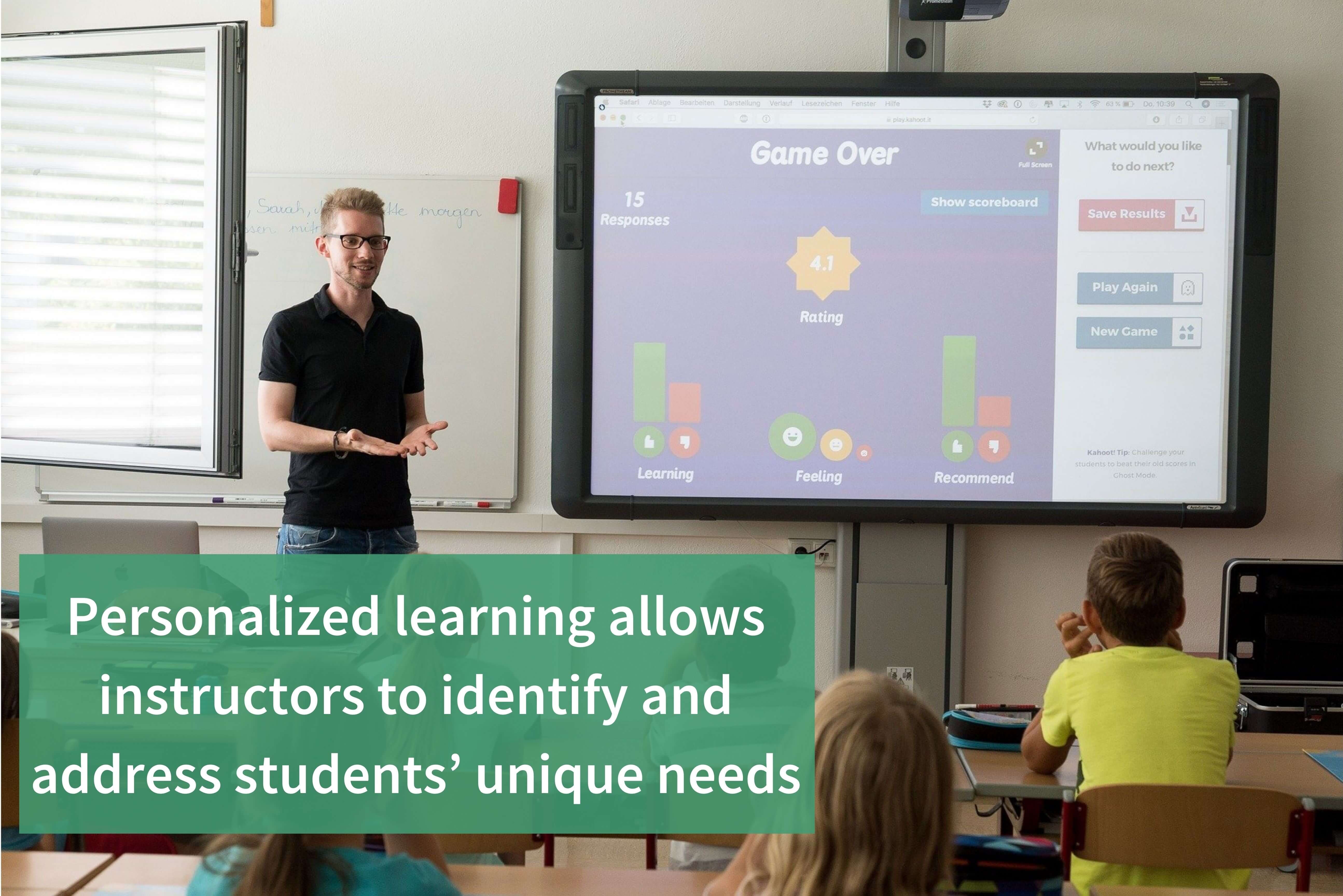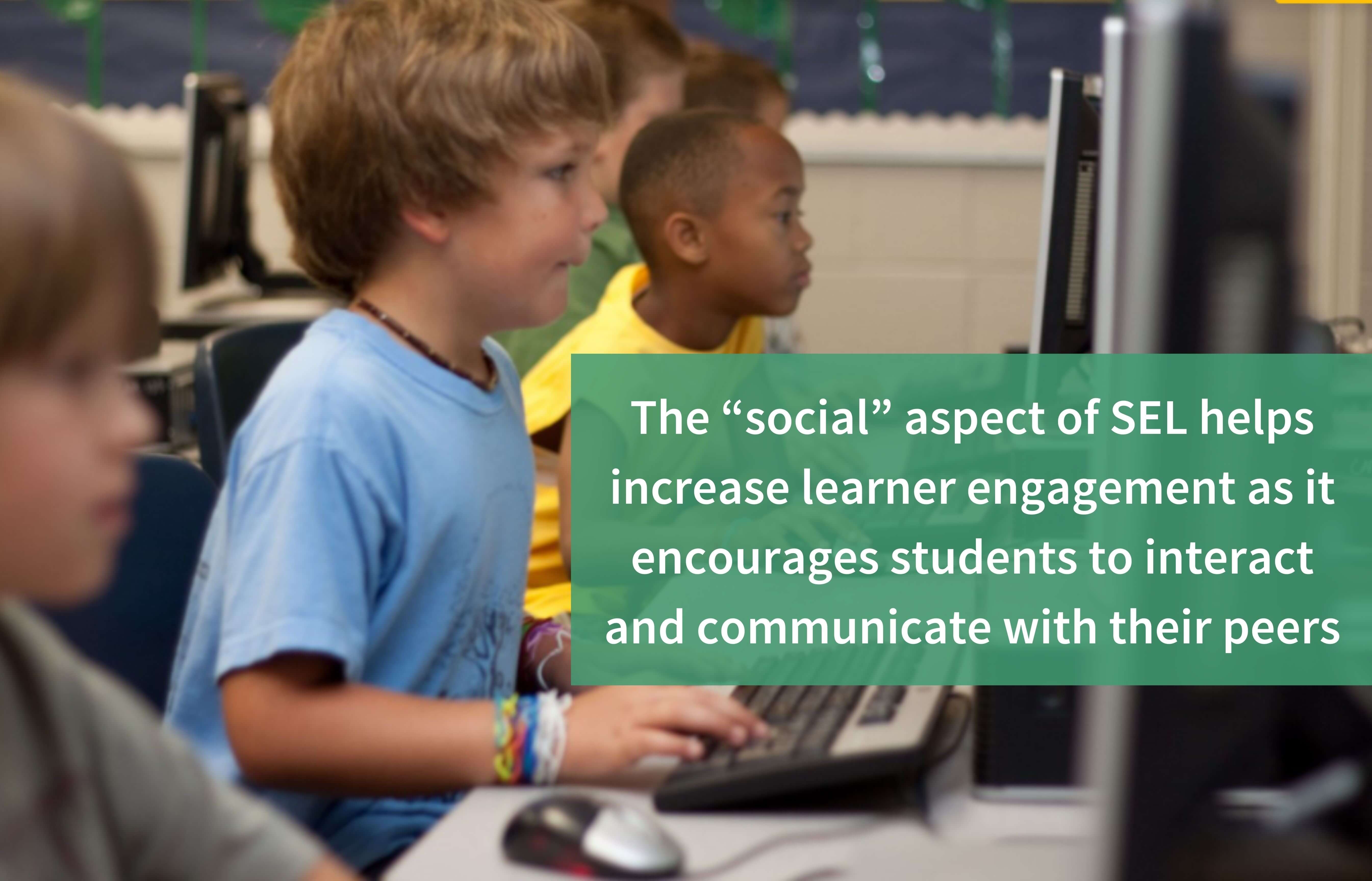Student engagement is a good measure of the success of online learning. The higher the student engagement, the more successful the online classes. Low student engagement can result in alienation, boredom, and consequently low achievement, leading to higher dropout rates. To engage students, online classes not only have to be entertaining but also interactive.
How can we increase engagement in online learning? Engagement is driven by interaction, so student participation is a must.
Below we outline some tips to increase engagement in online learning.
Personalize
According to iNACOL, the definition of personalized learning is:
“Tailoring learning for each student’s strengths, needs, and interests– including enabling student’s voice and choice in what, how, when and where they learn– to provide flexibility and support to ensure mastery of the highest standards possible.”
Personalized learning allows instructors to identify and address students’ unique needs.
Personalized online learning is about optimizing the learning process and maximizing the amount of learning per unit of time. For this, teachers can use powerful tools, such as Fuse Classroom’s AI-enabled LMS features, for example, to personalize instruction and utilize real-time data for feedback to intervene exactly where each student needs it most.
Personalization allows for an appreciation of different learning styles. No two students learn the same way.
Personalization also changes the dynamic between the teacher and the student. When teachers give ownership to students over their learning and ground the learning in their interests and passions, students feel valued, motivated, and in control.
Some strategies you can use to help students personalize their learning journey include setting an objective and letting students show the initiative. Teachers can allow students to come up with their ideas on how to solve a problem or reach a specific goal.
For instance, when you are giving students an assignment, let them choose the mediums or tools they want to use to complete it. Give them the freedom to use their own technology or delivery methods as well, such as a PowerPoint presentation, infographics, or a deep-dive blog post.
When teachers allow students to work this way, students are more likely to feel motivated. It will help them take part in the learning process in a more creative and innovative way.
Interactive Courses 
One of the best ways to encourage engagement is through interaction. When students feel like they’re actively participating in courses, their motivation, critical thinking, and engagement are instantly increased.
To make a course interactive, you can ask for student feedback, have students contribute to the course, and even encourage peer evaluation. You can encourage active learning, facilitate understanding of concepts and achieve your training objectives faster like this.
On the other hand, you can also save time on course creation and promote social learning in an online setting by adding content generated by the students themselves too. This way, they can contribute and improve the quality of the course.
Multiple Formats
Students are able to tap into a variety of learning modes that enhance their abilities to retain information. Students can learn more quickly and at a deeper level by utilizing multiple learning strategies, also improving attention spans.
Most online learning platforms provide instructors multiple avenues for communicating with students. Aside from the standard communication tools such as email and discussion forums, teachers can also embed audio and video during online courses and involve students in instant messaging for questions.
Students also enjoy explanatory screencast videos, which are easy and inexpensive to create. Other fun formats to increase learner engagement can be pop quizzes, drag-and-drop activities, whiteboard animations, infographics, graphics, and images.
Shorter Classes
A study by Ferguson and DeFelice reports that students in short online courses performed significantly better than their full-semester online peers. Thus, shorter 20 to 30 minute online classes are more effective than hour-long ones.
Another example of why making online courses relatively shorter is more effective in increasing student engagement comparative to longer classes is this short account by Inside Higher Ed, which explains how shorter classes can help teachers ensure that students leave the class having learned a set of knowledge and skills.
By developing shorter courses, teachers can more intentionally structure the course around one piece of accumulated knowledge leading to the next, instead of stuffed bulky contents taught in one sitting.
According to Penelope Moon, the former director of online programs in the School of Historical, Philosophical and Religious Studies at Arizona State University, having shorter classes also really forces faculty to identify what’s essential in a course, and to trim the fat.
Integrate Social Emotional Learning (SEL) 
Social-emotional learning is especially important in online learning environments. Online learning has its own set of challenges, and it can be difficult for teachers to integrate SEL during such circumstances. But integrating SEL is essential, not only to increase engagement but also to help students combat online learning challenges.
Integrating SEL into online learning settings can help students combat isolation and loneliness. The “social” aspect of SEL helps increase learner engagement as it encourages students to interact and communicate with their peers. One of the ways of doing that is by creating a learning community. Teachers can create a vibrant online learning community by making use of communication and collaboration tools in online learning platforms.
Another great way to boost learner engagement is by creating learning cohorts- smaller groups of students with similar skills. This way, students can exchange knowledge among themselves, discuss the courses, and learn from each other.
Another aspect of SEL can be self-assessment opportunities. Self-assessment allows students to take responsibility for their learning. Teachers can help students grade their own discussion posts, or provide input on grades.
If you want to learn more about online learning challenges and solutions, you can check this blog: Overcoming the Challenges of Online Learning.
Gamify 
This is one of the most fun ways to increase learner engagement. There are several ways to foster gamification, from creating student leaderboards to awarding points and badges when students complete assignments. Involving students in healthy competition is a good way to motivate them.
Acknowledging an individual student’s achievements without making underachieving classmates feel invalidated is inspiring. One of the best ways to do this is by adding badges to courses to recognize student accomplishment.
Embracing the digital realm and using it to stay connected is the next step in education.
